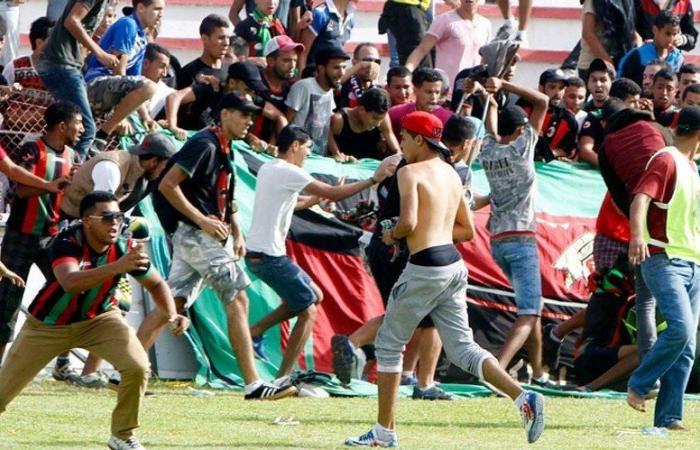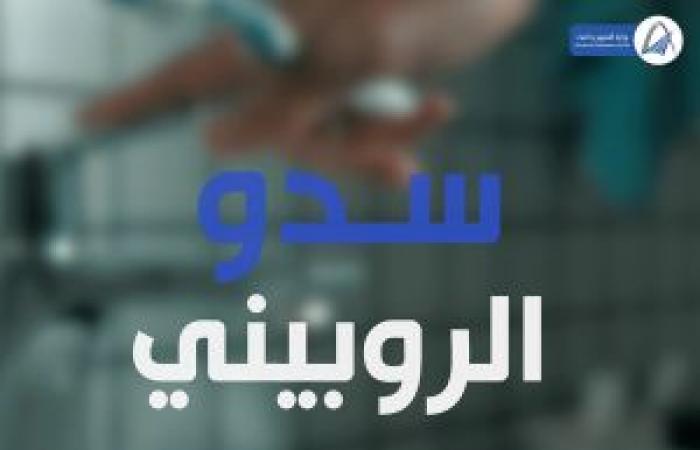The phenomenon of hooliganism is experiencing a notable increase, which represents a major challenge for the organizers of sporting events, particularly during football matches. This phenomenon manifests itself in violent and illegal behavior on the part of supporters in or around stadiums. These behaviors vary, ranging from clashes between supporters to attacks on players, referees and organizers, and even the destruction of sports infrastructure.
During recent incidents of hooliganism in Morocco, a match between Chabab de Mohammédia and Difaâ Hassani El Jadidi, as part of the Botola Pro, was marked by acts of violence causing injuries. A few days earlier, another match between Chabab Houara and Amal Tiznit, in the amateur division, also saw clashes leading to injuries among supporters and players, as well as significant material damage.
A complex phenomenon
Abderrahim Bourkia, sociologist and research professor in sociology of sport, believes that the phenomenon of violence and hooliganism in stadiums is complex and is not limited to sports venues. According to him, the perpetrators of these acts are mainly adolescents, young people or young adults.
In a statement to SNRTnews, Bourkia explained that the mental and emotional formation of individuals involved in this violence, as well as their interactions within groups, are influenced by the codes and behaviors specific to the world of “ultras”, who do not reject necessarily violence, particularly symbolic violence. The latter, often, constitutes the initial spark of acts of violence in stadiums.
The author of the book “The Ultras in the City” continued by indicating that these groups, as collective entities, are formed around an identity that competes with other similar identities and sharing the same objectives. This creates tensions and rivalries which can degenerate into violent acts. He added that the codes of the “ultras” are largely based on symbolic violence, which can evolve into physical violence and attacks against members of competing groups.
For his part, Mohamed Bouzfour, former head of the sports security division at the General Directorate of National Security, noted that the phenomenon of hooliganism had declined during the current season thanks to measures such as holding certain matches at behind closed doors and the ban on fan travel in certain cities. However, some recent incidents have broken this trend.
Bouzfour explained to SNRTnews that it is difficult to completely eradicate violent behavior in stadiums, because they are an extension of existing violence in society. He clarified that the behavior of certain individuals in and around stadiums actually reflects their attitudes in daily life.
He also stressed that the configuration of certain stadiums contributes to the aggravation of incidents, due to their limited capacity and the lack of necessary infrastructure, which complicates the task of organizers and law enforcement, particularly during matches involving clubs with a large fan base.
What solutions?
Regarding solutions to combat hooliganism, Abderrahim Bourkia believes that this phenomenon must be addressed at the root, that is to say at the social level.
In this context, he said: “I don’t think banning ultra groups is a solution. It would be better to train individuals and young people so that they do not become instruments manipulated by others. These groups are made up of a heterogeneous mix: some see it as a means of subsistence or domination, while others seek social recognition. »
He added: “If individuals are well prepared from a young age, it will be possible to guide them towards creativity, excellence and innovation. The activities of ultras, in many regions of the world, favor these aspects. But in some cases, the door remains open to symbolic violence and confrontations. »
In the same vein, Mohamed Bouzfour stressed that the opening of stadiums built or renovated on the occasion of Morocco’s organization of the finals of the African Cup of Nations and the World Cup could contribute to reduce violence in stadiums. These modern infrastructures offer equipment to facilitate the work of organizers.
He specified that the installation of numbered seats, the use of tamper-proof electronic tickets and the surveillance of stadiums and their surroundings by security cameras can greatly help to reduce violence and simplify the tasks of those responsible. (Source : SNRTNEWS)
Article19.ma







